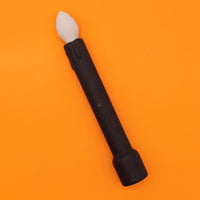Latex vs. Other Types of Condoms: Which is Right for You?
There are so many condoms on the market, that choosing the right one can feel like a game of Risk. While latex condoms are the most popular and widely available type, they’re not the only option. In this post, we’ll compare latex condoms to non-latex alternatives like polyurethane, polyethylene, polyisoprene, and lambskin condoms. Each type offers unique benefits and potential drawbacks, depending on your preferences and needs.
Understanding Condom Materials
Latex Condoms
Pros:
-
Widely available and generally affordable.
-
Highly effective at preventing pregnancy and protecting against STIs
-
Strong and stretchable, with many options for textures and lubrications.
Cons:
-
Can cause allergic reactions in people with latex sensitivities.
-
Susceptible to degradation with oil-based lubricants, so water or silicone-based lubricants are recommended.
Polyurethane Condoms
Pros:
-
A good option for those with latex allergies.
-
Thinner than latex, providing a more natural feel.
-
Safe with both oil and water-based lubricants.
Cons:
-
Less stretchable, which can increase the likelihood of slipping or breaking.
-
Can be more expensive than latex.
Polyisoprene or Skyn Condoms
Pros:
-
Made from synthetic rubber, ideal for those allergic to latex.
-
Offers a soft, stretchable feel similar to latex.
-
Highly effective at preventing pregnancy and STI transmission.
Cons:
-
Not compatible with oil-based lubricants.
-
Can be more costly than latex condoms.
Lambskin (Natural Membrane) Condoms
Pros:
-
Provides the most natural feel, as the material is highly sensitive.
-
Safe with any type of lubricant.
Cons:
-
Does not protect against STIs since the natural membrane is porous.
-
Typically the most expensive option and less widely available.
Choosing the Right Condom for You
Ultimately, the right condom depends on your specific needs. If you or your partner are allergic to latex, polyisoprene or polyurethane may be the best choices. If STI protection is essential, avoid lambskin condoms. Additionally, consider the type of lubricant you prefer, as some condoms aren’t compatible with oil-based products.
Final Tips: Always check the expiration date, and store condoms in a cool, dry place to maintain their effectiveness.
Reviewed by: Dr. Holly Richmond, Somatic Psychotherapist, Licensed Marriage & Family Therapist (LMFT), Certified Sex Therapist (CST) and Associate Director of Modern Sex Therapy Institutes



















































